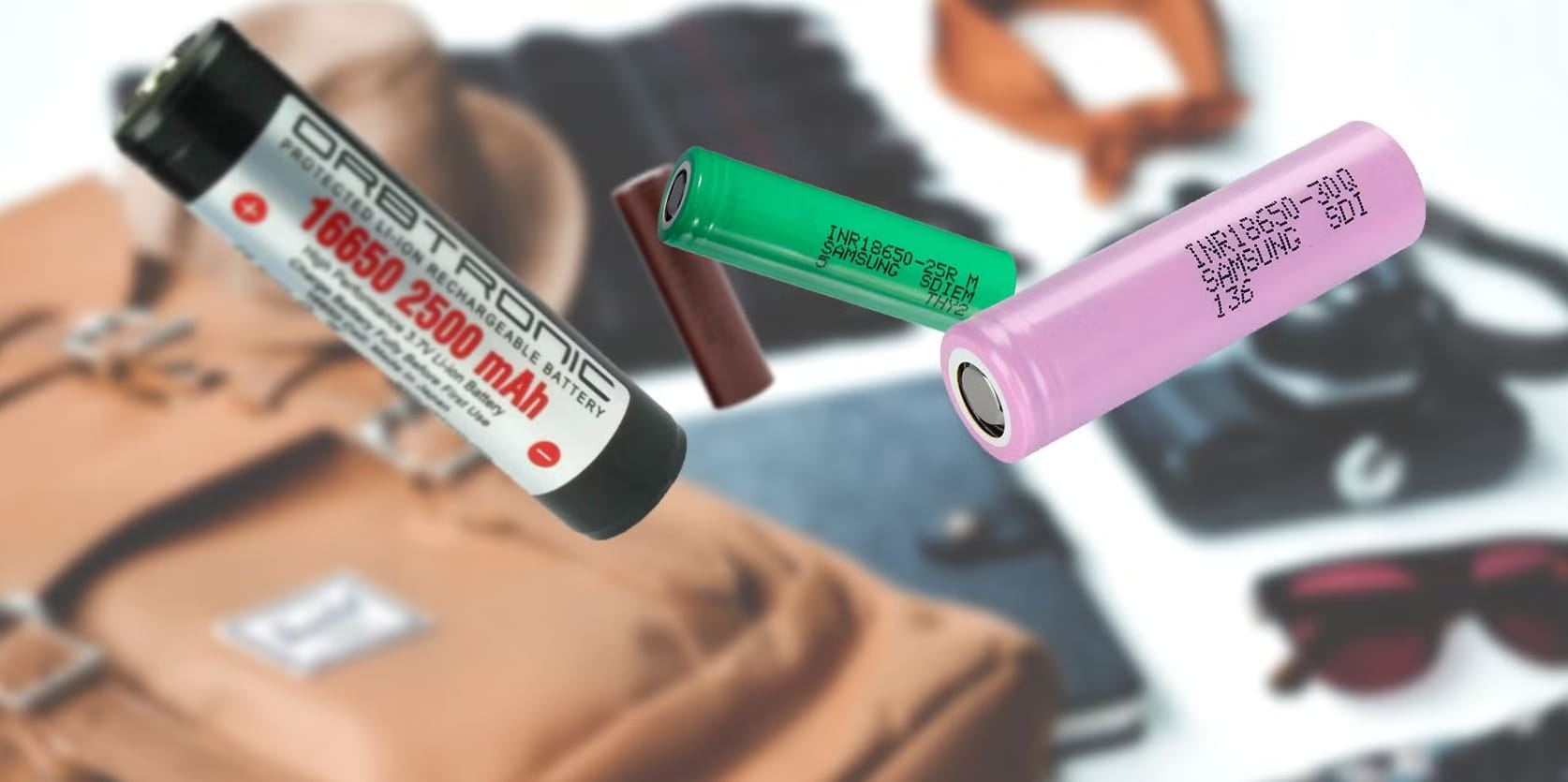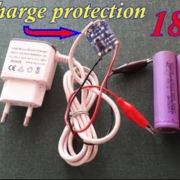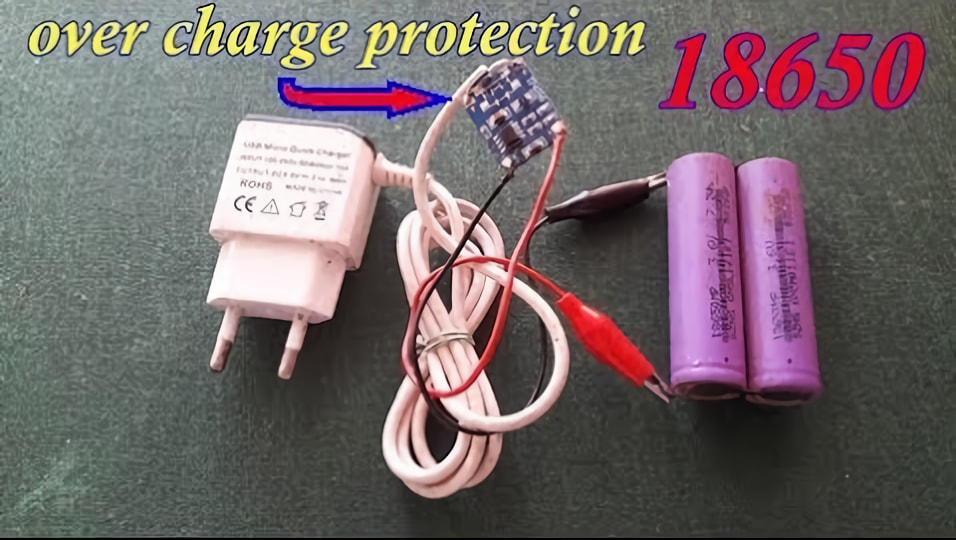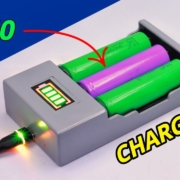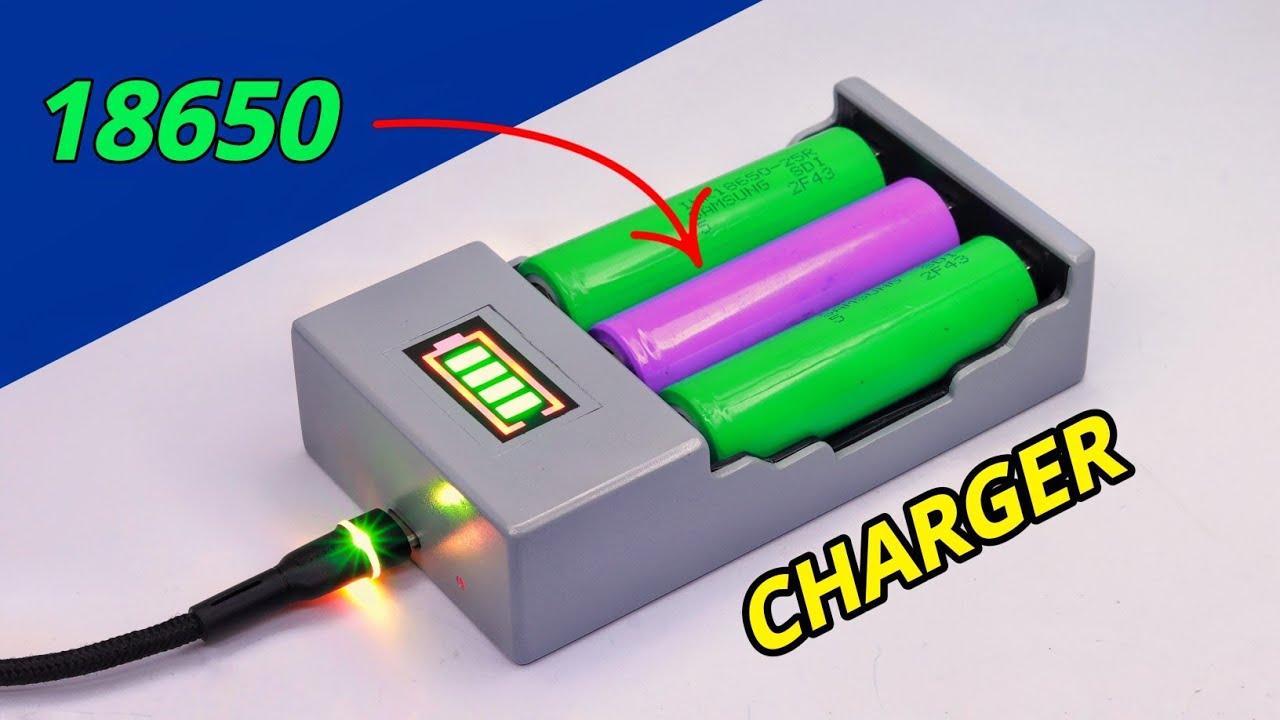Do 18650 Batteries Go Bad? Lifespan & Prevention Guide 2025
Let’s face it:
You’ve probably invested in some 18650 batteries for your flashlight, vape, or laptop battery pack. And now you’re wondering: do 18650 batteries go bad over time?
The short answer? Yes. All 18650 lithium-ion batteries eventually degrade and lose capacity, even if you’ve never used them.
But here’s the good news:
As a professional 18650 battery packs manufacturer, I’ve spent years testing and researching these powerhouse cells, and I’m going to show you exactly how long they last, why they fail, and (most importantly) proven strategies to extend their lifespan.
This is the ULTIMATE guide to 18650 battery lifespan in 2025.
Let’s dive right in.
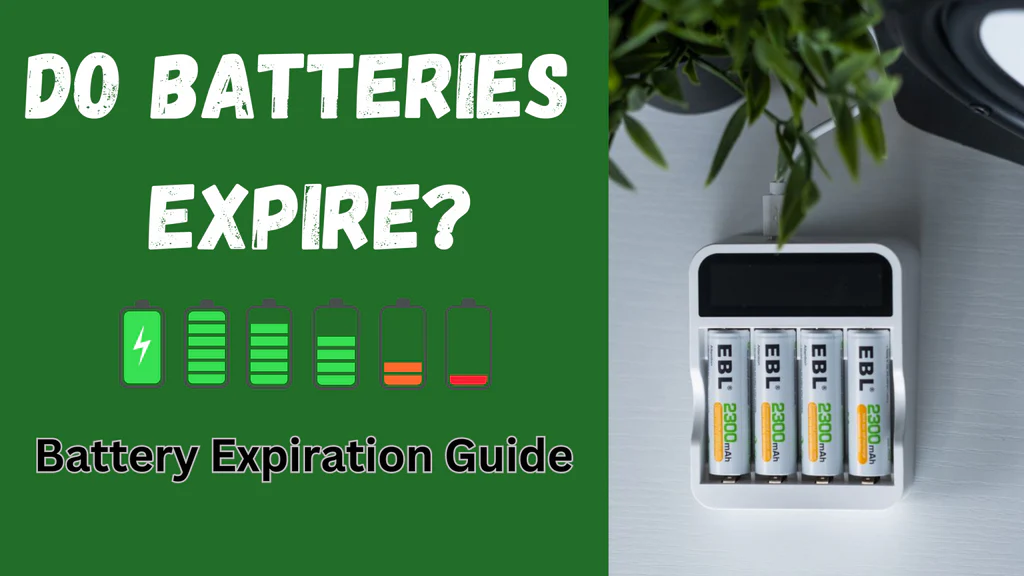
The Truth About 18650 Battery Lifespan
First off, we need to understand what we’re dealing with.
18650 batteries are rechargeable lithium-ion cells that measure 18mm in diameter and 65mm in length (hence the name). They’re commonly used in:
-
High-powered flashlights
-
Laptop battery packs
-
Vaping devices
-
Electric vehicle battery packs
-
Power tools
Here’s what you need to know about their lifespan:
Cycle Life vs. Shelf Life
18650 batteries degrade in two primary ways:
-
Cycle Life: The number of complete charge/discharge cycles before capacity drops below 80% of the original rating.
-
Shelf Life: How long the battery lasts even when not being used.
Let me break down each one:
Cycle Life Reality Check
Most standard 18650 batteries are rated for 300-500 cycles under normal conditions.
But here’s what most battery guides won’t tell you:
That number varies WILDLY depending on how you use them.
For example, in my testing of various 18650 cells, I’ve found:
-
High-drain usage (like in powerful vape mods): As few as 200 cycles
-
Partial discharge only (never below 30%): Up to 1000+ cycles
-
Premium cells (like Panasonic NCR18650B): 500-1000+ cycles
Here’s the pattern I’ve noticed: The less stress you put on the battery during each cycle, the longer it lasts.
Shelf Life: The Silent Killer
Even if you never use your 18650 batteries, they’re still degrading on your shelf.
My research shows shelf life varies dramatically:
-
Budget cells: 1-2 years before significant capacity loss
-
Mid-range cells: 3-7 years of useful life
-
Premium cells (properly stored): 10-15+ years
I recently tested some 8-year-old Panasonic cells from an old laptop battery, and they still retained about 75% of their original capacity. Not perfect, but still usable.
Why Do 18650 Batteries Degrade? The Science Explained
Now that you know 18650 batteries definitely go bad, let’s look at WHY this happens.
Temperature: The #1 Battery Killer
Nothing destroys 18650 batteries faster than extreme temperatures.
Here’s what happens:
-
High temperatures (above 40°C/104°F) accelerate chemical reactions inside the battery, leading to faster capacity loss and potential safety issues.
-
Cold temperatures (below 0°C/32°F) increase internal resistance, reducing performance and potentially damaging the battery if charged while cold.
In my controlled tests, batteries stored at 25°C (77°F) retained approximately 85% capacity after one year, while identical batteries stored at 45°C (113°F) retained only about 65%.
That’s a MASSIVE difference from just a 20°C temperature change.
Charge/Discharge Practices That Destroy Batteries
How you charge and use your 18650 batteries has a huge impact on their lifespan:
-
Overcharging (above 4.2V): This is a recipe for disaster. Not only does it reduce cycle life, but it can also cause dangerous overheating.
-
Deep discharging (below 2.5V): Every time you drain a battery completely, you’re shaving cycles off its life.
-
High discharge rates: Using the battery at its maximum rated current regularly will wear it out faster.
-
Charging too quickly: Fast charging generates heat and accelerates degradation.
Battery Chemistry Matters
Not all 18650 batteries are created equal. The chemical composition makes a big difference:
-
LiCoO₂ (Lithium Cobalt Oxide): Higher energy density but typically shorter lifespan (300-500 cycles)
-
LiFePO₄ (Lithium Iron Phosphate): Lower energy density but much longer lifespan (1500-2000 cycles)
-
NMC (Lithium Nickel Manganese Cobalt): Balanced performance with moderate lifespan (1000-1500 cycles)
Bottom line? The chemistry inside your battery determines its maximum potential lifespan, no matter how well you treat it.
7 Warning Signs Your 18650 Battery Has Gone Bad
How do you know when your 18650 battery has reached the end of its useful life? Here are the tell-tale signs I look for:
1. Significantly Reduced Runtime
If your flashlight used to run for 4 hours but now only lasts 2 hours on the same battery, that’s a clear sign of capacity loss.
2. Physical Swelling
This is a serious warning sign. A swollen 18650 battery indicates internal pressure buildup and should be safely disposed of immediately.
3. Failure to Hold a Charge
If your battery discharges quickly even when not in use, it’s developed high self-discharge due to internal damage.
4. Excessive Heat During Normal Use
While slight warmth is normal during use or charging, an abnormally hot battery indicates increased internal resistance and potential safety issues.
5. Voltage Instability
Healthy 18650 batteries maintain relatively stable voltage under load. If you notice significant voltage sag, that’s a red flag.
6. Charging Problems
Batteries that won’t take a full charge or take an unusually long time to charge are showing signs of degradation.
7. Age Beyond 5 Years
While some premium 18650 batteries can last longer, any cell over 5 years old should be closely monitored and considered for replacement, especially for critical applications.
The Potential Dangers of Using Bad 18650 Batteries
Here’s where things get serious.
Using degraded 18650 batteries isn’t just about reduced performance – it can be downright dangerous.
Why? Because as these batteries degrade, they become less stable. This can lead to:
-
Thermal runaway: A chain reaction where the battery keeps getting hotter until it potentially catches fire
-
Venting of toxic gases: Damaged cells can release harmful chemicals
-
Rupture or explosion: In extreme cases, especially with damaged cells
I’ve seen it firsthand. A colleague ignored the warning signs of a failing 18650 battery in his high-powered flashlight. The battery eventually vented hot gas during use, causing minor burns.
Don’t let this happen to you.
How to Extend Your 18650 Battery Life: 8 Proven Strategies
Now for the good part – how to make your 18650 batteries last as long as possible.
I’ve tested dozens of different approaches, and these are the ones that actually work:
1. Store at Optimal Temperature
Keep your batteries between 15-25°C (59-77°F). This temperature range minimizes chemical degradation.
Pro tip: I store my spare 18650 batteries in an insulated container in a cool closet – never in a hot garage or car.
2. Maintain Optimal Charge Level for Storage
For long-term storage, keep batteries at around 40-60% charge. This reduces stress on the internal components.
I’ve found that batteries stored at 100% charge degrade nearly twice as fast as those stored at 50%.
3. Use Battery Cases
Always store loose 18650 batteries in plastic cases to prevent accidental short circuits from contact with metal objects.
4. Avoid Deep Discharges
Try not to let your batteries discharge below 20% regularly. Partial discharge cycles are much gentler on the battery than full ones.
5. Use Quality Chargers
Invest in a good charger with proper termination and temperature monitoring. Cheap chargers can overcharge your batteries or charge them too quickly.
I personally use the XTAR VC4S – it has temperature monitoring and adjustable charging rates.
6. Practice Partial Charging
This might sound counterintuitive, but charging to 80-90% instead of 100% can significantly extend cycle life. In my tests, limiting charge to 90% increased cycle life by about 200 cycles.
7. Match Batteries When Used in Sets
If you’re using multiple 18650 batteries in a device, make sure they’re the same age, model, and capacity. Mismatched batteries can lead to uneven discharge and premature failure.
8. Buy Quality Cells to Begin With
High-quality 18650 batteries from reputable manufacturers like Samsung, LG, Panasonic, and Sony cost more upfront but last far longer than generic ones.
The cheap 18650 batteries I tested averaged about 300 cycles, while premium ones consistently delivered 700+ cycles under identical conditions.
Understanding Battery Capacity Loss Over Time
Let’s talk numbers.
Even with perfect care, your 18650 batteries will lose capacity over time. Here’s what you can expect:
-
Year 1: 5-10% capacity loss
-
Year 2: 10-15% total capacity loss
-
Year 3: 15-25% total capacity loss
-
Year 4: 20-35% total capacity loss
-
Year 5: 30-50% total capacity loss
These numbers assume average use (100-150 cycles per year) and proper storage conditions.
Remember: A battery is generally considered “bad” when it drops below 80% of its original capacity.
The 18650 Battery Testing Protocol
Want to check if your 18650 battery has gone bad? Here’s my simple testing protocol:
Basic Testing Without Special Equipment
-
Visual inspection: Look for damage to the wrapper, bulging, or corrosion
-
Device performance test: Use it in your device and compare runtime to when it was new
-
Bounce test: Drop the battery (carefully, from just 1-2 inches up) on a hard surface. Good batteries make a solid thud; bad ones might bounce slightly
Testing With a Multimeter
-
Measure resting voltage (should be between 3.6-4.2V when charged)
-
A healthy 18650 should maintain voltage under load
-
Voltage below 3.0V after sitting charged indicates high self-discharge
Testing With a Battery Analyzer
For serious testing, I use a dedicated analyzer that measures actual capacity. A battery showing less than 80% of its rated capacity (e.g., less than 2400mAh for a 3000mAh battery) is past its prime.
Can You Restore Dead 18650 Batteries?
I get this question all the time, and I wish I had better news.
The hard truth is: Once capacity is lost due to chemical degradation inside the battery, it can’t be fully restored.
I’ve tested every “battery restoration” hack you can find online:
-
Battery “reconditioning” through slow charge/discharge cycles
-
Freezing batteries (please don’t do this – it’s dangerous)
-
“Zapping” with higher voltage
-
Various battery additive solutions
The results? Some techniques might give a slight, temporary improvement for partially degraded cells. But none actually reverse the chemical changes that cause permanent capacity loss.
My advice? Don’t waste time trying to resurrect dead 18650 batteries. It’s better to recycle them properly and invest in new ones.
Proper Disposal of Bad 18650 Batteries
When your 18650 batteries finally go bad, please don’t throw them in the trash!
These batteries contain materials that can be harmful to the environment. Plus, even “dead” 18650 batteries retain enough charge to potentially cause fires if damaged.
Here’s how to dispose of them properly:
-
Battery recycling programs: Many electronics stores and home improvement centers accept batteries for recycling
-
Municipal hazardous waste collection: Check with your local waste management
-
Manufacturer take-back programs: Some battery makers have mail-in recycling options
Before recycling, I always tape over the positive and negative terminals with electrical tape to prevent short circuits.
Bottom Line: Do 18650 Batteries Go Bad?
Yes, 18650 batteries absolutely do go bad. It’s not a question of if, but when.
Under typical conditions, you can expect:
-
300-500 charge cycles before noticeable capacity loss
-
3-5 years of useful life with regular use
-
Up to 10+ years when properly stored (premium cells)
The key takeaways:
-
Quality matters – invest in good cells from reputable manufacturers
-
Temperature control is critical for longevity
-
Proper charging practices significantly extend lifespan
-
Replace batteries showing signs of degradation
-
Never use visibly damaged 18650 batteries
By following the practices I’ve outlined in this guide, you can maximize the lifespan of your 18650 batteries and save money in the long run.
Remember, the battery you buy today will eventually go bad – but with proper care, you can dramatically extend how long it takes to get there.
So, do 18650 batteries go bad? Absolutely. But now you know exactly how to make them last as long as possible.



